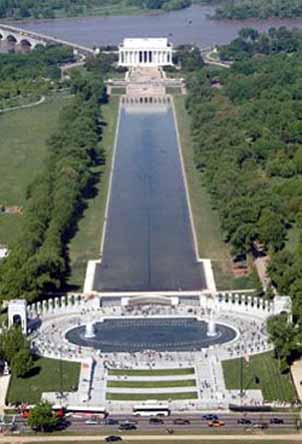Monuments only work as a disruption in the fabric of the everyday. Or at least that's the only way a monument can be about memorial and memory rather than the aura of monumentality. There's this sweet trap with memory, and with architecture too actually, where it all comes to be about the building or the moment or the ostentatious physical presence of the monument just as a monument. Whatever the memorial is supposed to represent just gets sort of compressed, or lost.

Monuments like Jefferson's or Lincoln's work in opposition to this rule, but that's only because they are immortalizing mythic figures and national narratives which surround and engulf those figures. So the scale and grandeur has to be there. Of course that's also an argument of historical context and mentality.

But for modern wars and modern monuments the mentality has to be different. The exaggerated mythos is no longer appropriate or acceptable. This is basically why I hate the new(ish) World War II memorial in DC:

It's heroic and symmetric and all composed of symbols, but it doesn't mean anything. It doesn't say anything about what that war was about, and it doesn't say anything about what that war was like. It's a heroic symbol without the heroes, or more accurately a heroic symbol which only means something as a symbol.
The Lincoln memorial is actually a great example. Because on the one hand you have this mammoth marble behemoth which celebrates a huge part of our national mentality through Lincoln, at the same time tying into ideas of nationalism and heroism of the 19th century... while on the other hand there's this little bronze plaque on the plinth out in front, which says simply:
I HAVE A DREAM
MARTIN LUTHER KING, JR.
THE MARCH ON WASHINGTON
FOR JOBS AND FREEDOM
AUGUST 28 1963
which (obviously) marks the place Dr. King stood and delivered that speech. It's a physical marker of a collective memory — a chance to disrupt your everyday experience and for a moment stand in that spot and let all those images and sounds that you've seen and heard in books, magazines, videos, and all the rest — to let all of that reality come flooding in and say for a moment: this happened here. This is a bit of what this was like. This is what he saw, in that photograph, this is what he was looking at in that video clip.
The image that inspired all of this? A recently completed (July 1999) memorial to the Kent State Massacre:

God that just grabs you, doesn't it.



